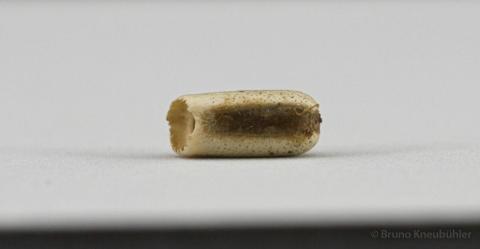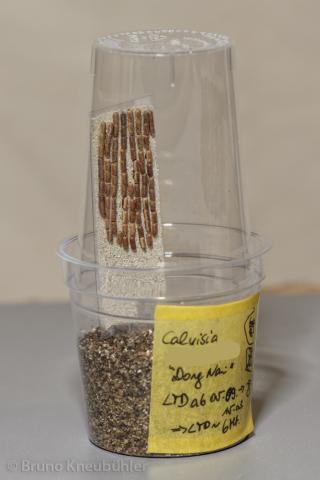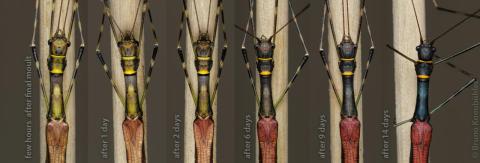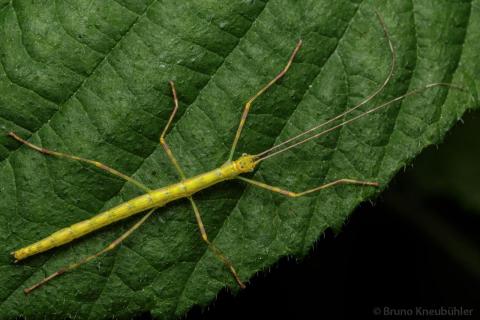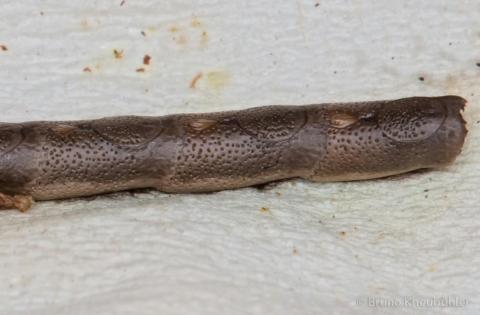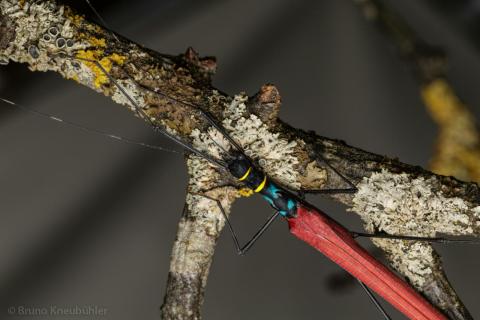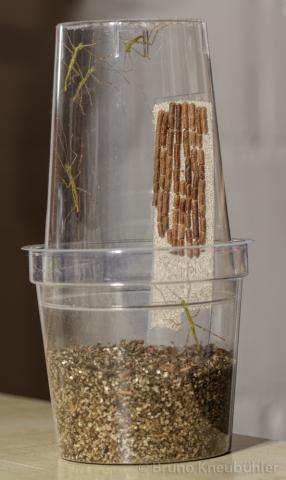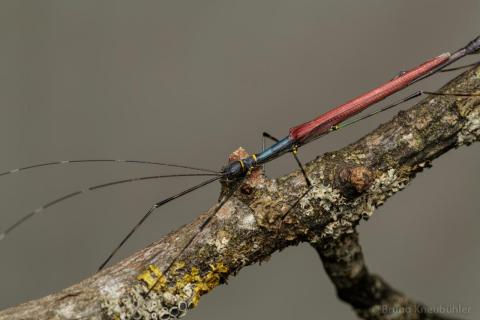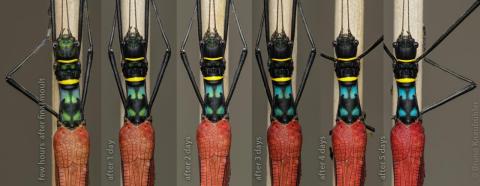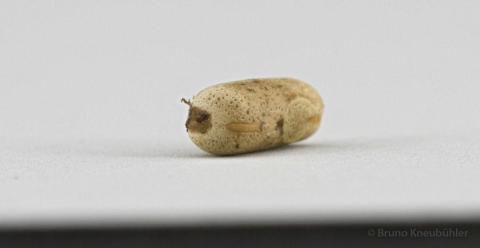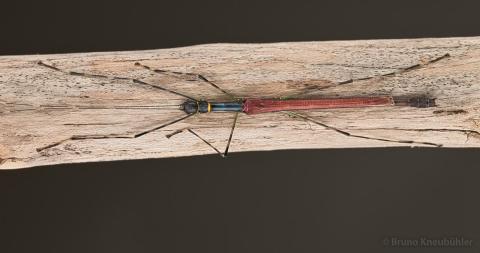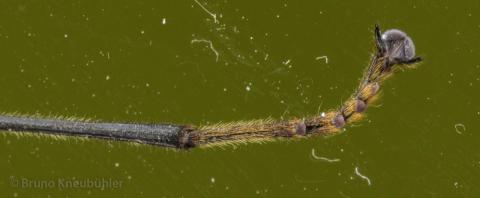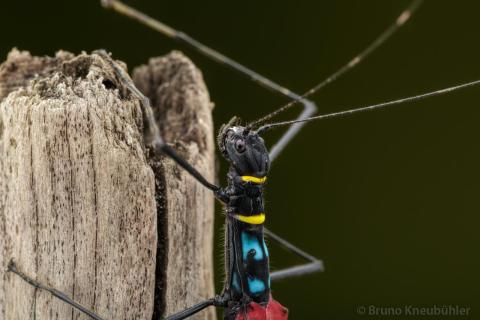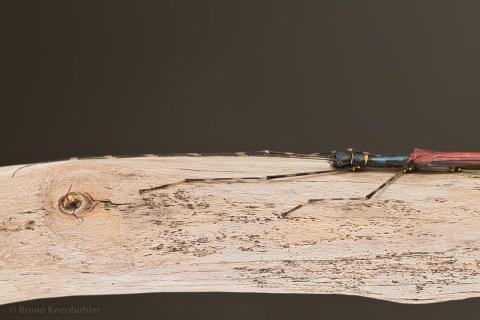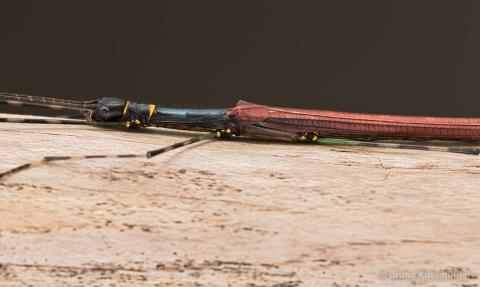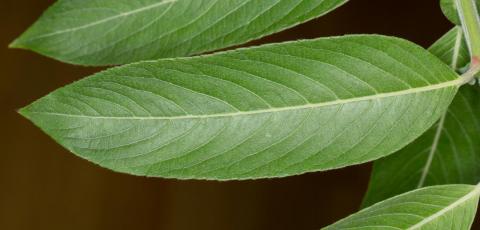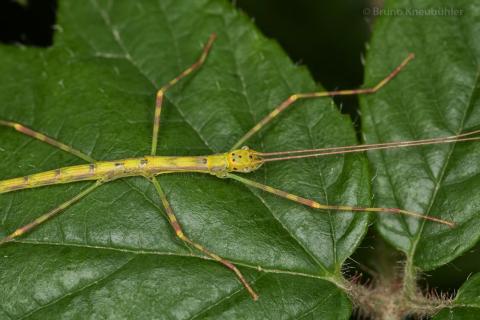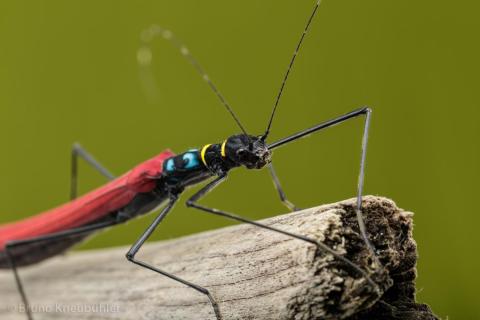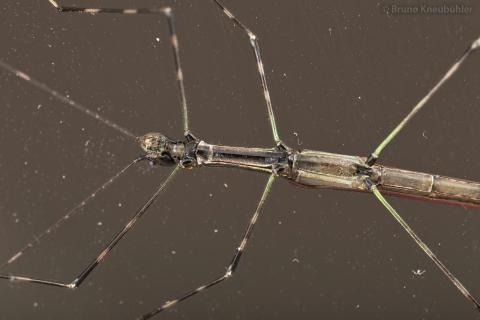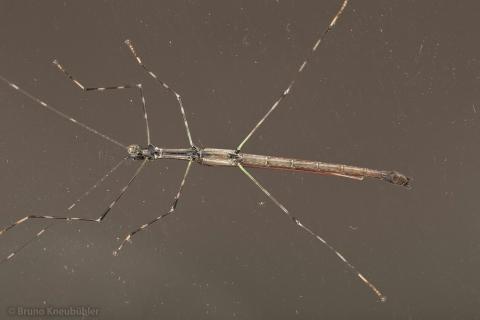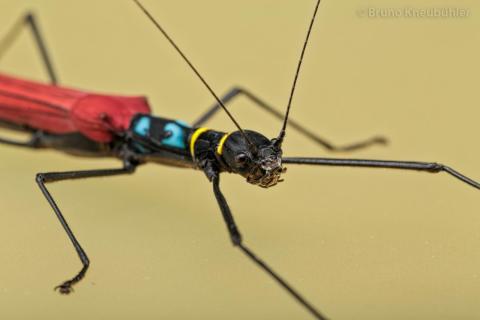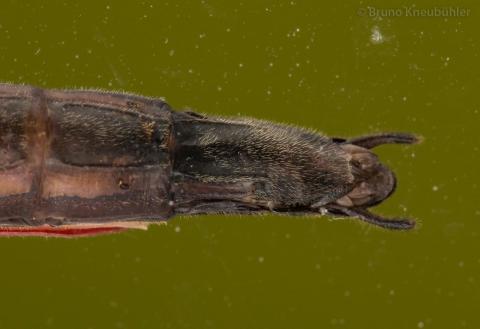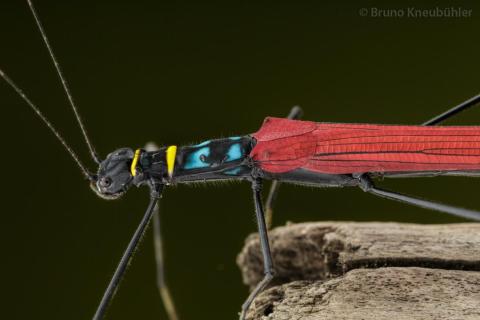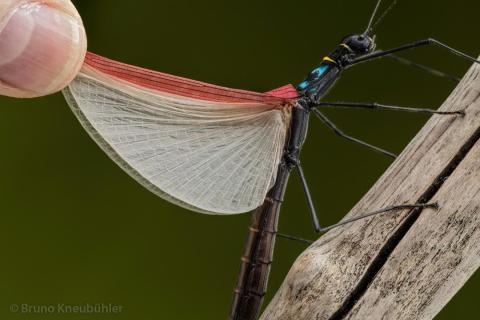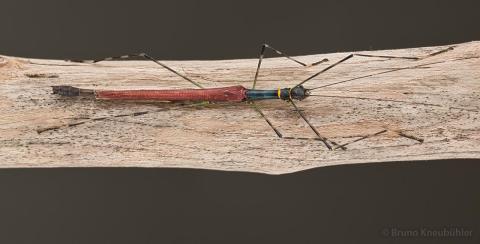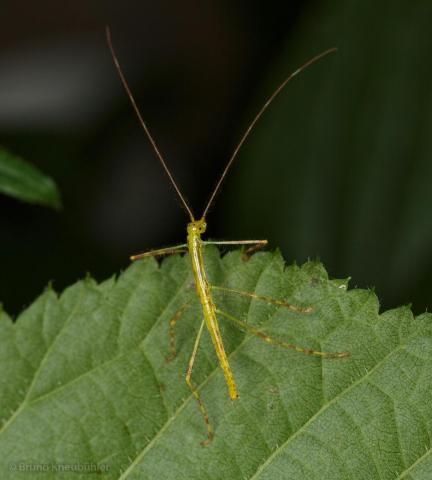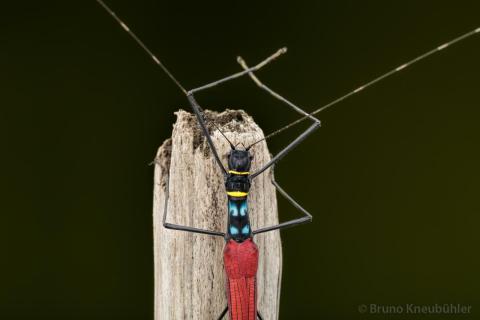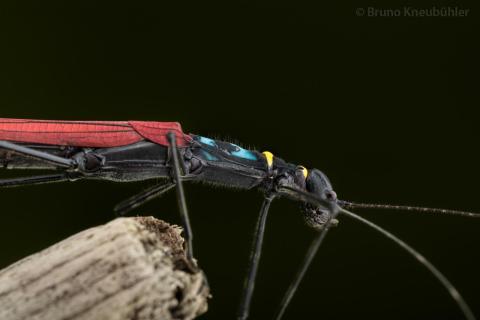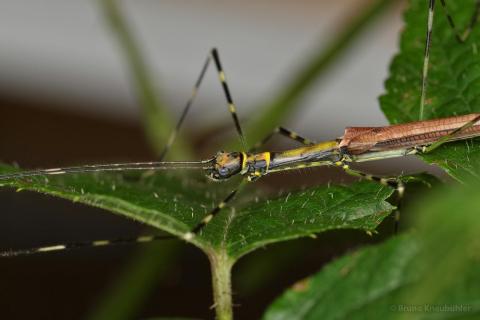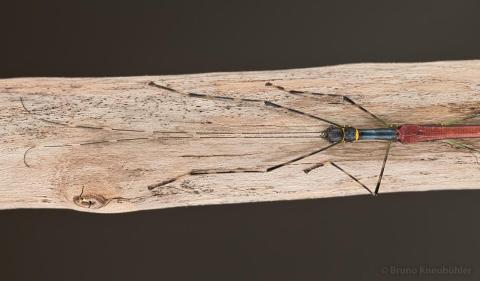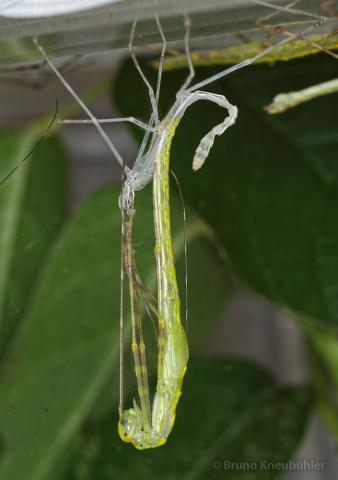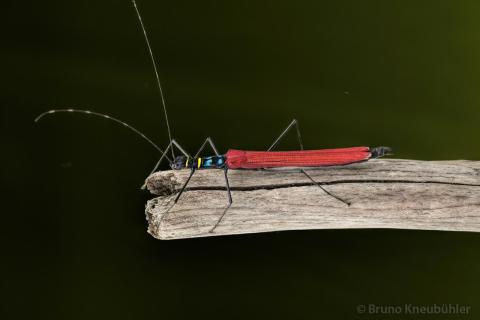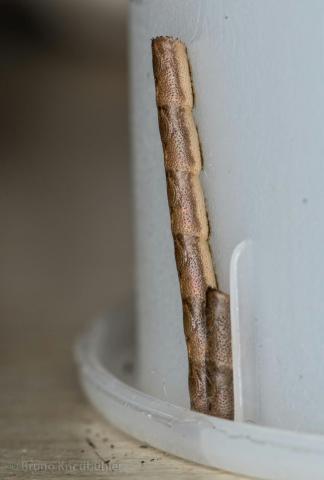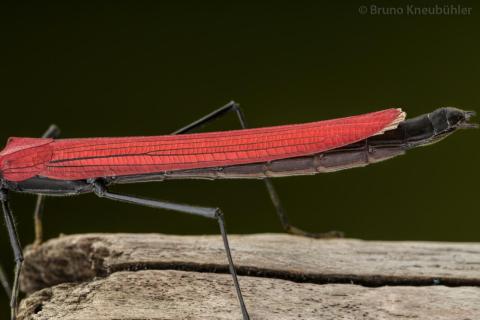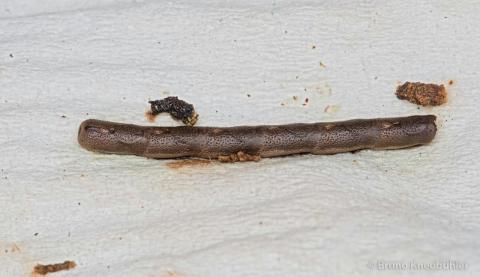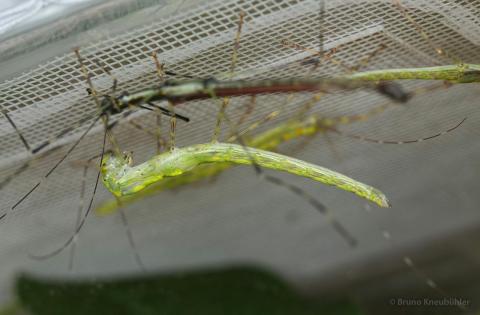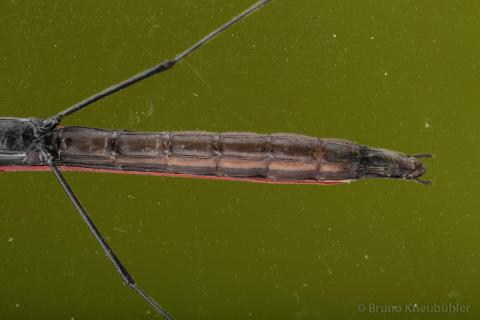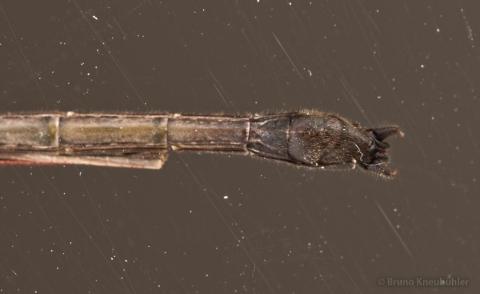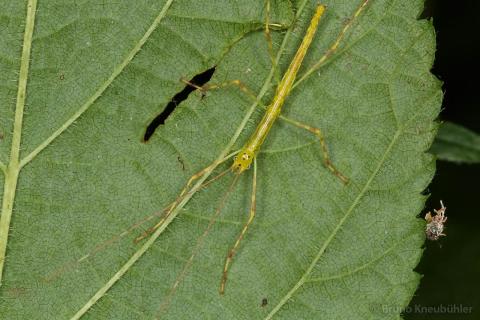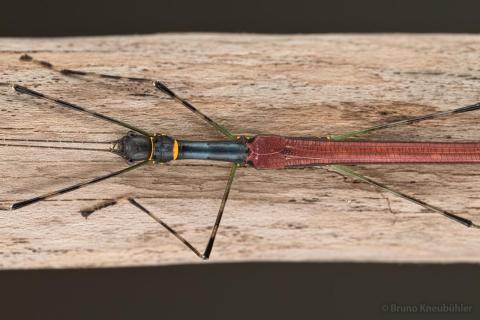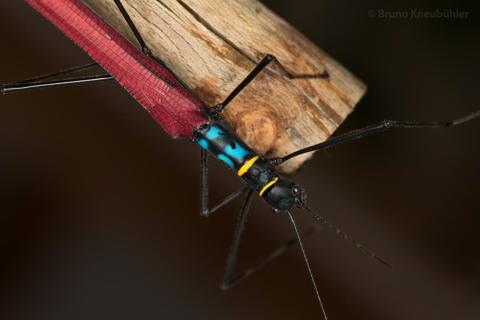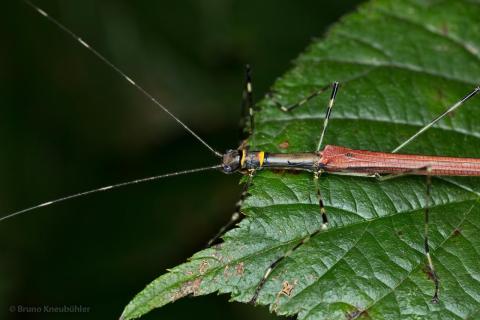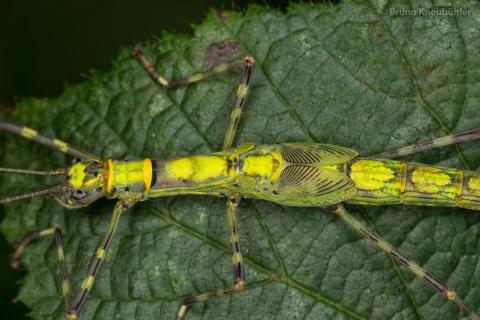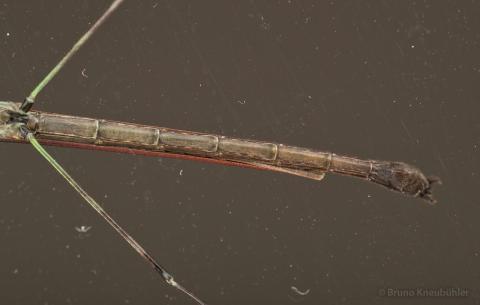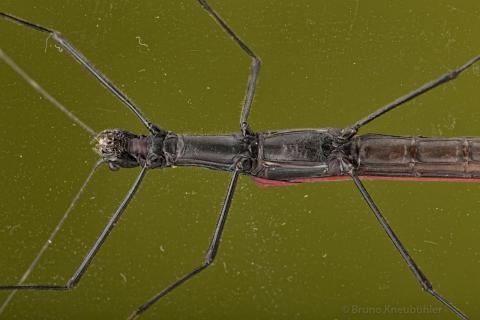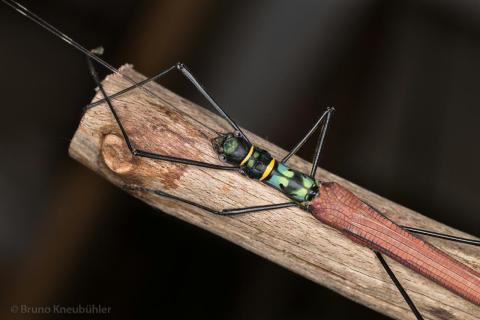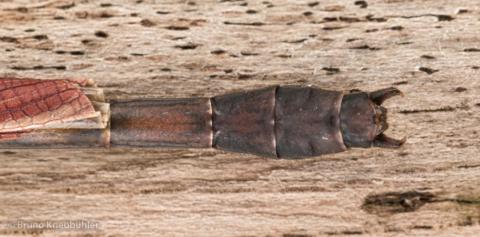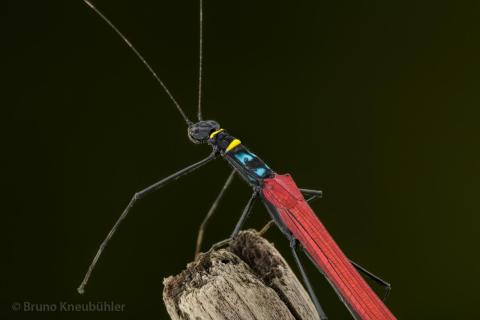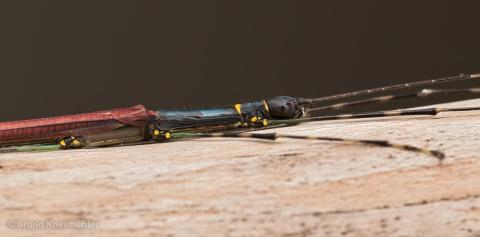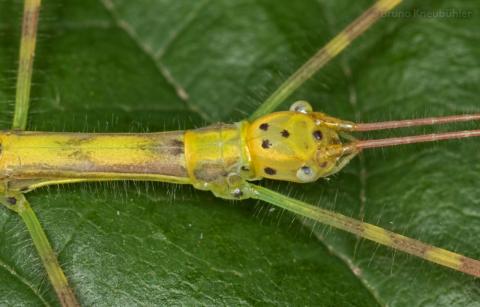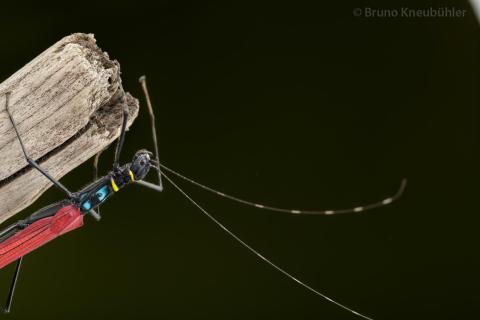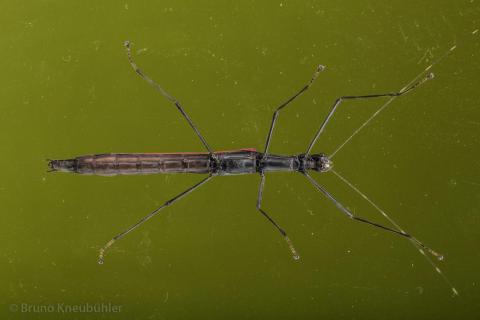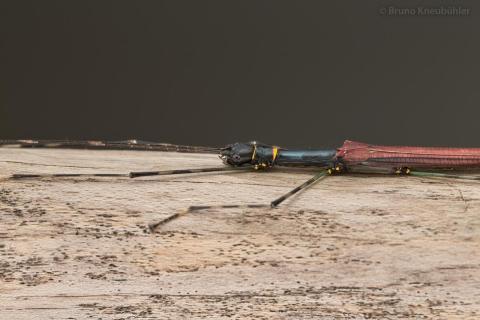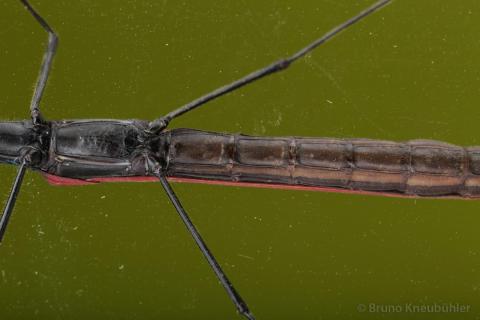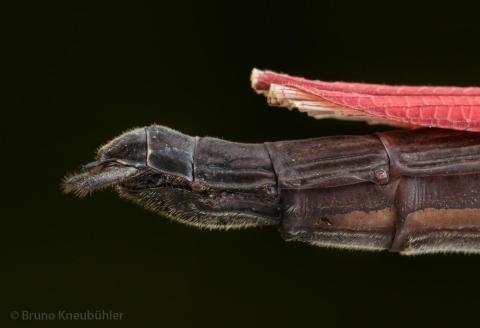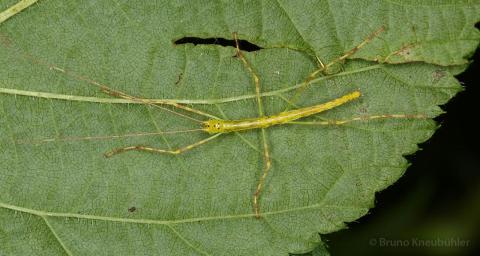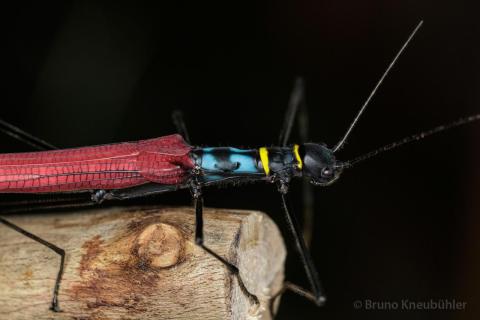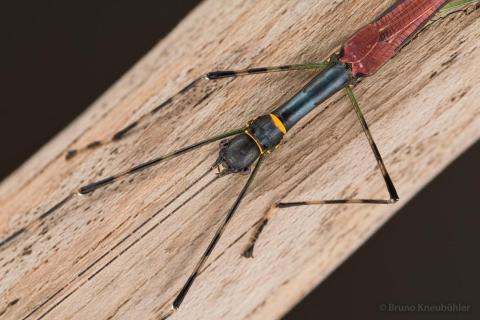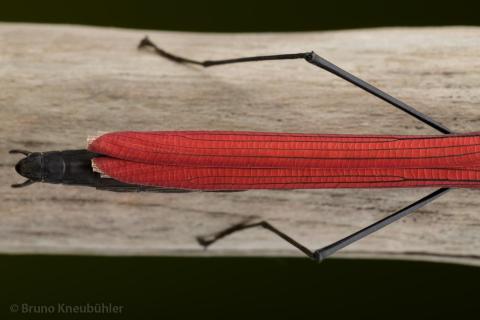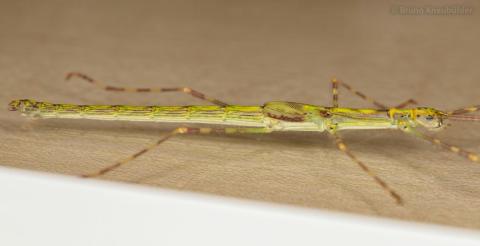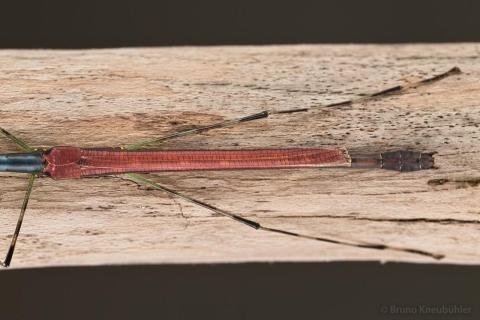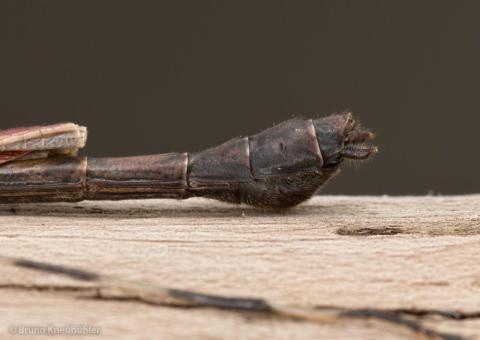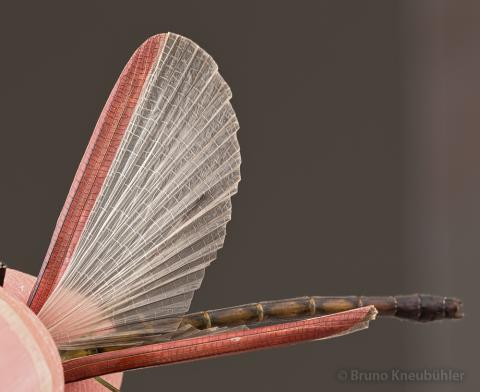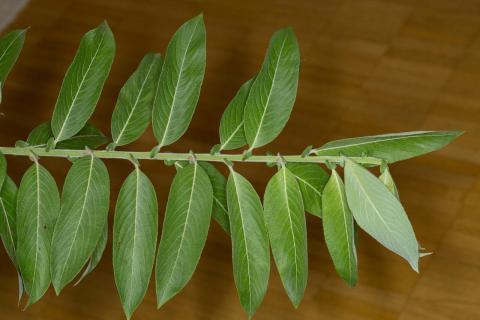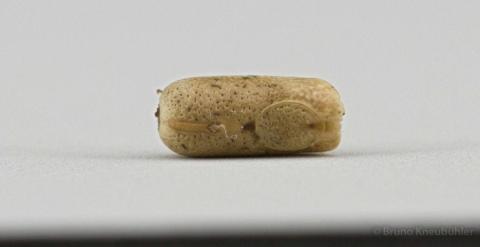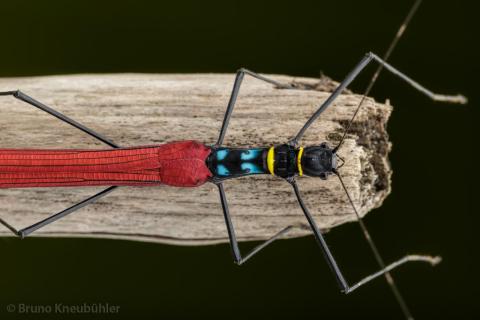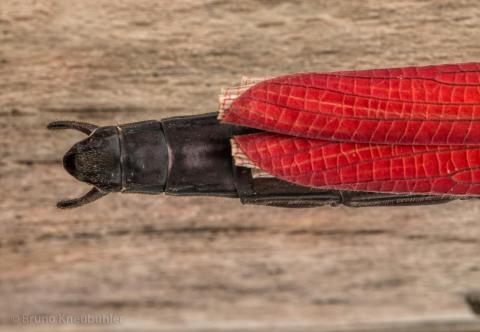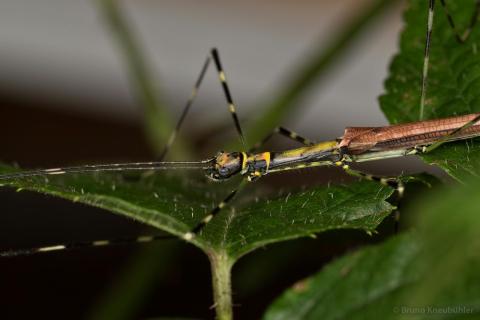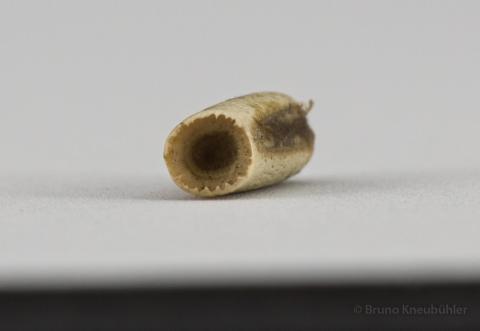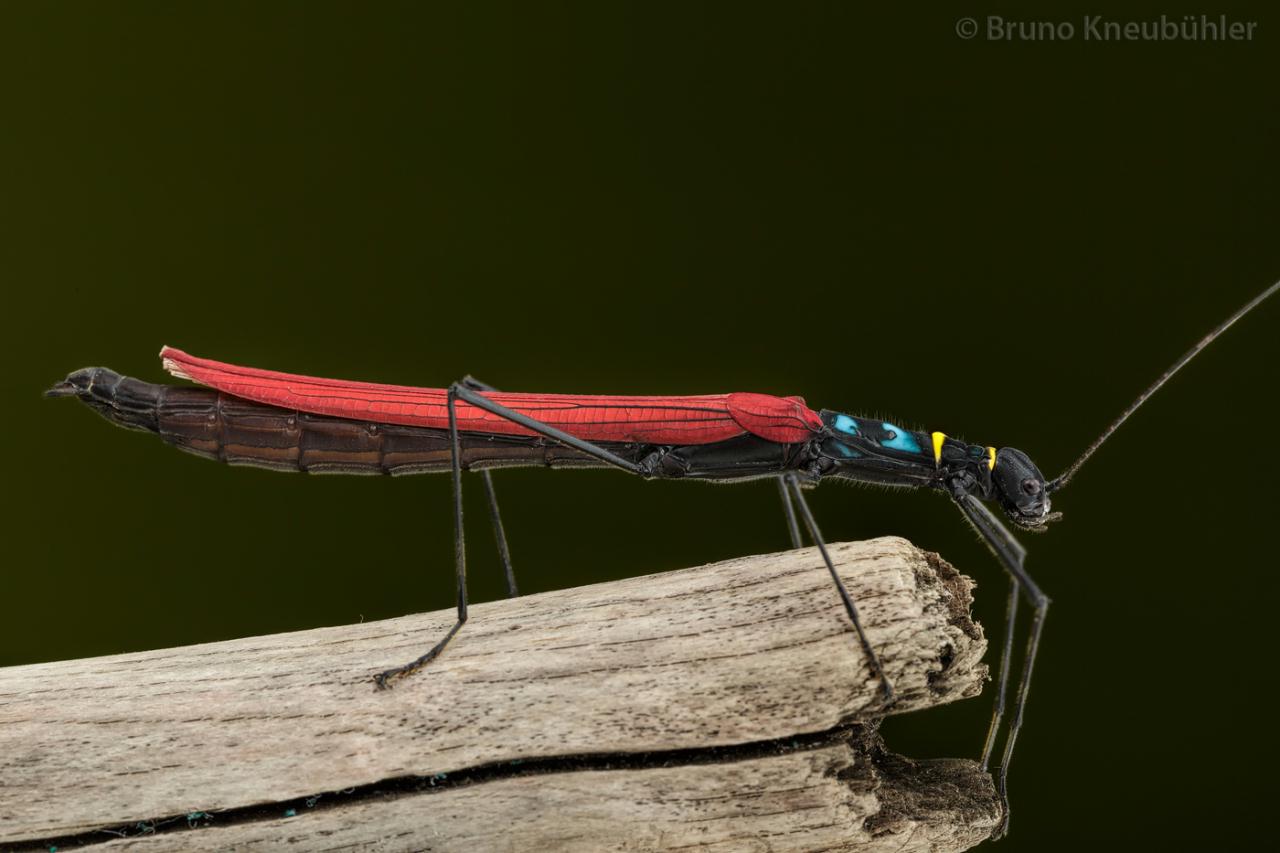
Genus
Stock
CLP
619
Culture status
In culture
Foodplants
Cherry Laurel (Prunus laurocerasus)
Salix sp.
Ficus lyrata
Ficus benjamina
Ficus elastica
Beech (Fagus sylvatica)
Prunus serotina
Breeding notes
Calvisia kneubuehleri "Dong Nai"
(von Bruno Kneubühler)
General Notes
- described by Joachim Bresseel (Belgium) and Jérome Constant (Belgium) in 2017
- this culture as initally been known as Calvisia sp. "Dong Nai"
- further taxonomical informations → Phasmida Species Files
- other Calvisia species which are or have been in culture → CLP (Culture List Phasmatodea)
Culture History
- 2012 - first successful culture by Bruno Kneubuehler
- 2014 - distributed to other breeders as Calvisia sp. „Dong Nai“
- since 2017 known as Calvisia kneubuehleri "Dong Nai"
Origin
- Dong Nai NP (Vietnam)
Females
- body length about 7 cm
- coloration consistent amonst females
- basic coloration is black
- vibrant yellow and blue markings on the thorax (dorsally)
- carmine red wings
- antennae with few light-colored rings and these are longer than the forelegs
- anal region of the hindwings (the membranous part) is smoke-colored and semi-translucent
Males
- slim
- body length about 5 cm
- coloration is consistent amongst males
- coloration is basically similar to the females, just paler
- less dark overall than the females
- yellow dots on the leg-joints (coxae)
- legs with light-colored rings
- anal region of the hindwings (the membranous part) is smoke-colored and semi-translucent
Nymphs
- freshly hatched nymphs about 16 mm long
- yellow-green
- very long antennae
- older nymphs are very colorful
- by L4 it is quite easy to draw a distinction between ♀♂ (by the naked eye)
- examples on how to differentiate between male and female nymphs
Eggs
- about 3 x 1.5 mm
- barrel-shaped
- light to dark-brown
- surface not smooth
- slightly glossy
- operculum (egg lid) is opposite to the side where they are glued
- micropylar plate is elongate and narrow
Food Plants
- it is very much recommended to cut away the edges of the leaves for nymphs in L1
- regularly change the plants and the water in which they stand
- cherry laurel (Prunus laurocerasus)
- there is quite a number of different cultivars of Prunus lauroceraus. The best results one gets with Prunus lauroceraus "Etna". Use young, "new" leaves which are still light green in color. These are quite well accepted by freshly hatched nymphs, older nymphs and adults. Old, dark-green leaves are well accepted by older nymphs and adults
- if only "old", dark-green colored cherry laurel leaves are available once the nymphs are hatching, then only few will actually start to feed. With the apple slice trick, more nymphs will start feeding. One can also apply an apple juice coating on the Prunus laurocerasus leaves, which helps getting the nymphs to start feeding
- cherry laurel (Prunus laurocerasus) is NOT the same nor closely related to bay laurel (Laurus nobilis). It is not known whether the later is accepted or not
- perhaps other (summer-green) Prunus species would also be accepted, but these have not been tested so far
- willow (Salix sp., unknown species)
an unidentified willow species is very well accepted by older nymphs and adults. So far this willow is unidentified (see pics below), although there are some similarities wiht S. triandra. Other willos species have not been accepted - Ficus lyrata
young leaves are moderately well accepted by nymphs and adults - Ficus benjamini
moderatly well accepted by nymphs and adults - Ficus elastica
is moderately well accepted by nymphs and adults, but for unknown reasons they to not really thrive on this plant (maybe because of the thick, white sap ...?) - beech (Fagus sylvatica)
moderatly well accepted by nymphs and adults. Beech is not a good enough food plant for this species though - once the nymphs started to feed, then they usually grow up quite problem-free
Behaviour
- nymphs as well as adults are usually passive during the day and out and about feeding at night
- though sometimes they can also be seen feeding during the day
- nymphs and adults react very frantically when they feel threatened (like when they are touched). They drop down, wriggle about and freeze again after a few steps
- adult males and females fly very well, and they do so quickly – therefore one should be careful especially when changing their food plants
- mating occur often during the night, males do not stay with the same female for a prolonged time
- usually eggs are glued in a straight line to different substrates near the ground (under CB conditions)
- eggs moistened with water, can be detached easily after a short time
- as their eggs are laid in a straight line, therefore the egg lid must be on the side to allow nymphs to hatch
- the barrel-shape of the eggs fits very well their strategy to lay the eggs in a straight line
Developement
- GET method for a natural incubation of glued eggs
- incubation time (HH-incubation on slightly damp vermiculite at 20 - 23 °C) is about 8 – 10 weeks
- please note, that for phasmids it is not uncommon that some nymphs hatch a few or many months after the first nymphs hatched
- it is possible to prolong the incubation time with the LTD-method, so that the nymphs will hatch in late spring when new cherry laurel leaves will be available
- better not to use spring tails when incubating eggs of this species, as they can crack open and destroy eggs which have been detached from the substrate they were glued to
- spread some moss over the eggs - this will make it much easier for the nymphs to hatch unscathed and it also reduces mould growth to some extend
- males will be adult after about 3 – 4 months (at 20 – 23°C), females after about 4 – 5 months, if fed on cherry laurel
- if they are fed on that particular willow (Salix cf. triandra), then males are adult after about 2.5 months
- females start laying eggs after about 3 – 4 weeks
- about 10 eggs per female and week
- adults can live for several months
Breeding Notes
- due to the food plant situation, I rate this species as very difficult
- a humidity level of about 70+ % rH (for adults) and 80+ % rH (for nymphs) seems to be fine.
- the humidity level can easily be raised with a wet paper towel on the cage floor. Covering the lid of the Faunabox partially with (clear) plastic foil also helps to raise humidity
- nymphs can be kept in a Faunabox / Faunarium
- move nymphs to a bigger cage as they grow bigger
- a cage of at least 30 x 30 x 30 cm height should be provided for 3 – 4 adult couples
- spray them 2 - 3 times a week, but allow the water to dry up before you spray again
References
- Phasmida Species Files (http://phasmida.speciesfile.org/)
Some basics of phasmid breeding for the rushed
- when you find the time, please carefully read our detailed notes on how to successfully breed phasmids (see main page > Phasmid Breeding). These notes are an integral part of this care sheet
- keep only one species per cage, overpopulation is one of the main reasons for breeding failures and deformed / crippled specimens
- keep nymphs seperate from adults, mainly to protect them during the crucial moulting phase
- choose the cage big enough. When in doubt, too big is (usually) better than too small
- a ventilator can support good breeding results, as it seemingly increases activity and feeding
- provide enough light, but avoid direct sunlight (overheating)
- try to keep day temperatures below 25°C, a nocturnal drop in temperature (down to around 20°C) is natural and advisable
- do not spray too much, phasmids are no fish ! Allow the water to dry up before you spray again
- minimize disturbances (loud music, light during the night, moving or opening up cages in the morning [often a moulting phase], handle phasmids only when the need arises ....)
